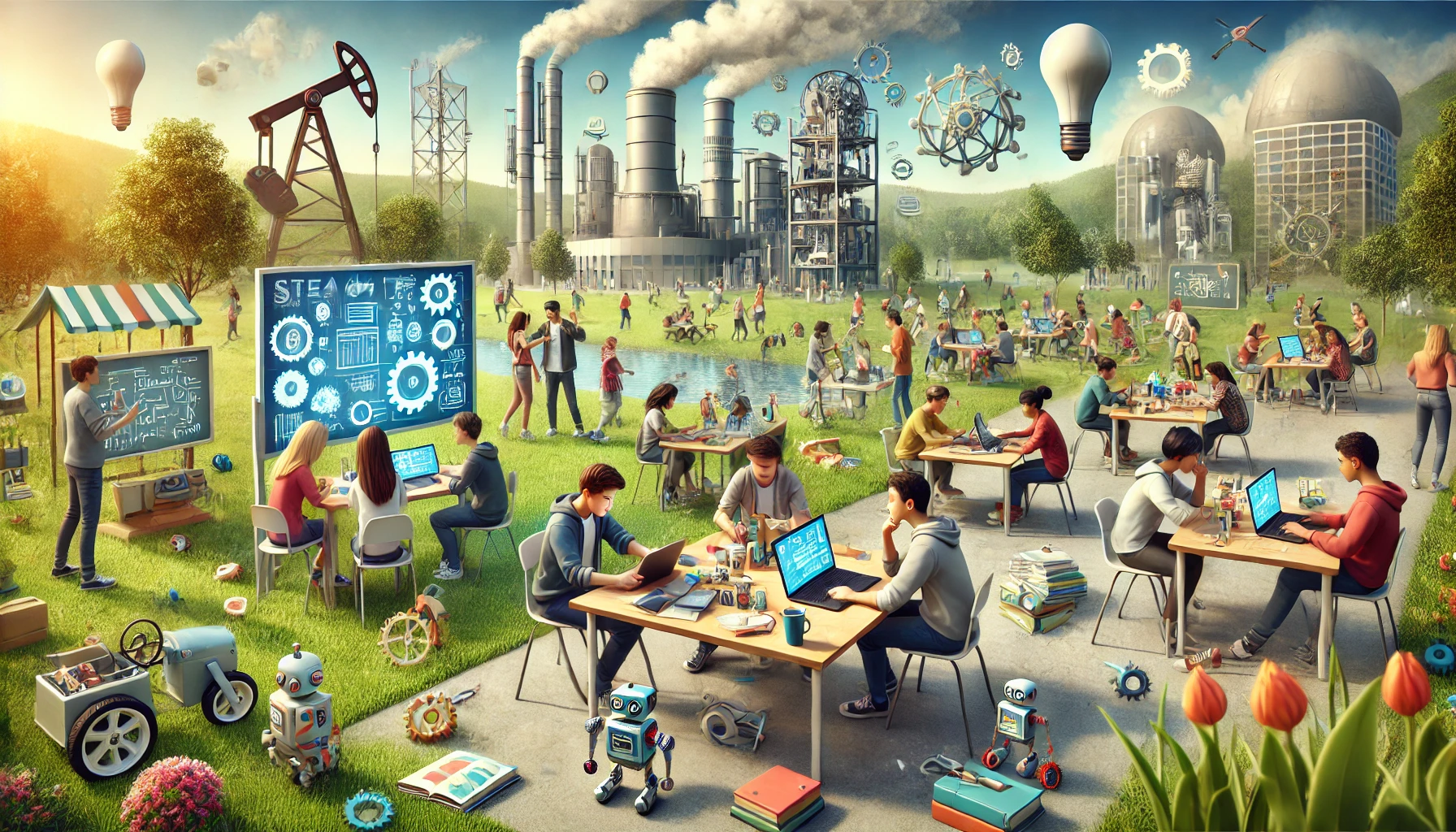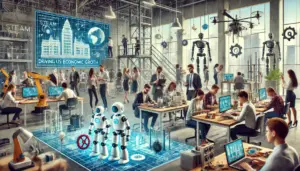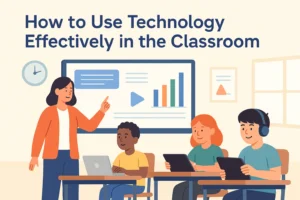STEAM’s Role in Tackling Global Challenges
In the face of global challenges, from environmental degradation to public health crises, the students of today’s classrooms will be instrumental in crafting sustainable solutions for a future that is yet to be defined. To empower these future innovators, it is imperative that we focus on cultivating essential skills such as inquiry, creativity, and the capacity to assimilate diverse viewpoints1. Unfortunately, the conventional educational framework, designed for an industrial era, often proves inadequate for the complexities of our contemporary, interconnected world.
Emerging educational paradigms, such as STEM and STEAM, present a viable alternative, advocating for a hands-on, interdisciplinary approach that bridges subject silos1. The STEAM movement, by integrating the arts with STEM disciplines, not only elevates creativity but also catalyzes innovation within educational settings1. This methodology is pivotal in nurturing critical thinking and problem-solving competencies, skills indispensable for addressing the global challenges we confront.
Key Takeaways
- STEAM education emphasizes inquiry, critical thinking, and process-based learning to foster creativity and problem-solving skills.
- STEAM requires intentional connections between STEM and arts standards to be taught and assessed collaboratively.
- Schools implementing STEAM need to engage in collaborative planning, adjust scheduling, provide professional development, and map curriculum for successful implementation.
- STEAM has gained popularity among educators, parents, administrators, corporations and other institutions.
- The STEM to STEAM movement integrates the arts with STEM subjects to enhance creativity and innovation in education.
The Importance of STEAM Education in a Changing World
In the context of a rapidly evolving global environment, STEAM (Science, Technology, Engineering, Arts, and Mathematics) education stands out as a pivotal framework for equipping students with the competencies necessary to navigate the complexities of the 21st century. This educational paradigm, by amalgamating the arts with traditional STEM disciplines, propels a holistic and interdisciplinary approach to learning. Such an approach is instrumental in cultivating critical thinking, problem-solving skills, and creativity, which are deemed indispensable for success in a world characterized by constant change234.
Fostering Critical Thinking and Problem-Solving Skills
STEAM education mandates students to engage with real-world problems, thereby prompting them to devise innovative solutions. Through the application of inquiry-based learning and hands-on projects, students hone their analytical capabilities, think critically, and formulate creative solutions3. This interdisciplinary methodology empowers learners to adeptly navigate the complexities of contemporary challenges, furnishing them with the adaptability and problem-solving skills essential for excelling in a dynamic employment landscape24.
Nurturing Creativity and Innovation
The integration of the arts within STEM disciplines in STEAM education nurtures an environment conducive to creativity and innovation. Students are incentivized to transcend conventional boundaries, explore a plethora of perspectives, and articulate their ideas through various modalities including visual, auditory, and kinesthetic expressions3. This distinctive amalgamation of scientific principles, technological advancements, and artistic expression enables learners to conceptualize innovative solutions to intricate problems, thereby preparing them for the evolving requirements of the 21st-century workforce4.
As technological advancements and global dynamics continue to evolve, STEAM education emerges as a cornerstone in equipping the forthcoming generation with the requisite skills and mindset to adeptly navigate an uncertain future. By harmonizing critical thinking, problem-solving, creativity, and innovation, STEAM education empowers students to become adaptable, collaborative, and ambitious problem-solvers. This enables them to effectively address the global challenges that the future may present234.
The Role of STEAM in Addressing Global Challenges
In the face of global issues, the significance of STEAM (Science, Technology, Engineering, Arts, and Mathematics) education is increasingly apparent. This educational approach equips learners with the skills and knowledge to navigate complex challenges, from climate change to sustainable development5.
Sustainable Development and the UN’s Global Goals
The United Nations’ Sustainable Development Goals (SDGs) act as a blueprint for addressing global challenges. STEAM education is pivotal in empowering students to contribute to these global objectives. By fostering critical thinking and problem-solving abilities, learners can leverage interdisciplinary knowledge to innovate solutions for poverty, inequality, and environmental degradation5.
STEAM-Based Solutions for Real-World Problems
STEAM education motivates students to engage with real-world problems, deepening their comprehension of global challenges’ complexities and interconnectedness. Through projects such as designing sustainable infrastructure and developing renewable energy solutions, students gain practical insights into their academic knowledge. This experiential learning not only sharpens their skills but also instills a sense of responsibility to shape a better future5.
| Global Challenges | STEAM-Based Solutions |
|---|---|
| Climate Change | Renewable energy systems, sustainable urban planning, carbon capture technologies |
| Healthcare | Medical technologies, bioinformatics, telemedicine |
| Food Security | Precision agriculture, vertical farming, sustainable aquaculture |
Through STEAM-based projects, students gain a profound comprehension of the UN’s Sustainable Development Goals and the application of interdisciplinary skills to foster positive change6.
“STEAM education is not just about imparting knowledge; it’s about empowering students to become agents of change, capable of tackling the complex challenges that our world faces.”
Cultivating Global Citizenship Through International Collaboration
The student presentations at the “STEAM Education for Global Citizenship to Achieve the SDGs” event, hosted by IVECA International Virtual Schooling and Samsung Electronics America at the United Nations Headquarters, underscored the efficacy of innovative public-private partnerships in Global Citizenship Education7. These students leveraged STEAM skills to devise solutions for local community issues, resonating with the UN Sustainable Development Goals. Their communication and collaboration across international borders, facilitated by the IVECA virtual classroom platform7, exemplified the power of global collaboration. This project-based initiative not only fostered global citizenship but also enhanced empathy, intercultural competence, and the ability to address both local and global challenges8.
Global education encompasses a broad spectrum of topics, including global citizenship, sustainable development, human rights, social justice, cultural diversity, and environmental conservation8. It equips students with critical thinking and problem-solving skills by analyzing complex global challenges from diverse perspectives8. Furthermore, it cultivates intercultural understanding and empathy by immersing students in diverse cultures and viewpoints8. This methodology heightens awareness of critical environmental issues, such as climate change, biodiversity loss, and resource depletion8, equipping students with the skills and mindset desired by employers in a globally interconnected world8.
Integrating global education into educational curricula at both school and university levels8, alongside providing teacher training in global education pedagogy8, can significantly enhance global citizenship and empower students to address both local and global challenges9. Collaborative efforts among educational institutions worldwide8, supported by virtual exchange programs and digital platforms8, can further strengthen global connections and elevate global education initiatives9.
“Global citizens are empowered to tackle challenges through Education for Global Citizenship (EGC) and cross-culturally collaborative learning opportunities.”7
By cultivating global competence, critical thinking, creativity, empathy, and problem-solving skills9, educational institutions can equip students to become well-rounded global citizens. These individuals are poised to drive innovation and contribute to a better future for all9.
Preparing the Next Generation of Problem Solvers
In the 21st century, the complexities we encounter necessitate a new breed of problem solvers, possessing a broad spectrum of skills. Problem-Solving Skills, Global Citizenship, Empathy, Intercultural Competence, Teamwork, and Communication form the bedrock of this evolution10.
Developing Empathy and Intercultural Competence
Enhancing trust and tolerance is paramount for enduring development, with innovative public-private collaborations serving as a catalyst for quality education. Such education instills civic awareness, empathy, and the skills necessary for global citizenship10. By educating youth to coexist and co-create, we prepare them to navigate the complexities of political and economic divisions, thereby finding solutions to global challenges.
Fostering Teamwork and Effective Communication
STEAM education is crucial in this endeavor, promoting critical thinking, problem-solving, creativity, collaboration, and effective communication. These skills are indispensable for success in the 21st-century workforce and for addressing complex global issues10. Research indicates that arts engagement enhances academic performance across subjects10, and the teamwork and collaboration skills developed through STEAM are highly sought after in professional settings10.
“The key to solving global challenges lies in equipping the next generation with the skills and mindset to work together, across borders and disciplines, to find innovative solutions.”
By cultivating these essential competencies, we empower future leaders to adeptly navigate the dynamic landscape, addressing global challenges with empathy, creativity, and a global perspective.
Conclusion
The integration of STEAM education within early childhood settings is paramount for the development of young minds and their future preparedness11. This educational approach stimulates curiosity, enhances critical thinking, fosters creativity, and promotes collaboration, thereby empowering children to become adept lifelong learners and innovators12. It is the duty of educators, parents, and policymakers to prioritize and invest in STEAM education, ensuring a brighter future for forthcoming generations.
STEAM education transcends mere academic achievement, as it cultivates global competencies, champions diversity and inclusion, and addresses complex global challenges11. By integrating the arts into STEM disciplines, STEAM education encourages students to tackle problems from a multitude of perspectives, thereby augmenting innovation and problem-solving abilities12. Moreover, it aligns with the evolving job market, equipping students with the interdisciplinary skills essential for success in a rapidly evolving world.
As we progress, it is imperative to enhance access to high-caliber STEAM education, empowering all students to attain their utmost potential11. Through concerted efforts among schools, universities, and industry partners, we can forge a dynamic educational ecosystem that fosters the next generation of problem-solvers and innovators11. By placing STEAM education at the forefront, we can forge a future where creativity, critical thinking, and a profound comprehension of the world converge, heralding a more sustainable and prosperous tomorrow.
Visit our Blog for more about STEAM education.



